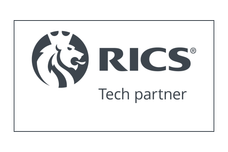mi-RTM FAQs
What is Right to Manage?
The Right to Manage was introduced under the Commonhold and Leasehold Reform Act of 2002. It allows leaseholders of flats to take over the management of their property either by managing it themselves or by appointing their own managing agent. By so doing, the costs involved with running the building can be more diligently managed and become more transparent.
Can I claim Right to Manage for my flat?
Most people can, although there are criteria that need to be met, as follows:
- At least 50% of the leaseholders must agree to proceed with the application.
- At least two thirds of the flats must be on long leases (defined as 21 years from date of issue).
- No more than 25% of the block may be used for non-residential purposes (don’t worry about car parks or other common areas, they don’t count).
- The freeholder must not be the local authority.
- Where the block has four or fewer flats in it, the Right to Manage cannot be exercised if the freeholder owns one of the flats and lives in it as their main home.
Is the Right to Manage the same as buying the freehold?
No. The Right to Manage is just that, the right of the leaseholders collectively to control the management of the building that your leasehold property is in. The freeholder will still retain overall ownership of the property. However, their control over the day-to-day management of the property will cease.
Is Right to Manage cheaper than obtaining the freehold?
Yes! As the freeholder retains ownership of the freehold title, you do not need to pay a premium, only the costs associated with exercising this right. This makes it a much more cost-effective solution for many leaseholders and tends to be easier to achieve.
Will my service charge be cheaper?
Probably, yes. In our experience, where the leaseholders manage a building themselves, or appoint their own managing agent, they are able to control costs much more successfully. They can ensure that money is not wasted and that the best price for services is achieved. Costs become transparent.
Is it easy to apply?
With our help, yes! Most problems with RTM applications come from mistakes made in the application process. Our fully automated system, backed up by professional expertise, ensures that all applications are submitted correctly.
How long does it take to make an application?
Due to the nature of the application process, most applications are completed within 5-6 months.
Can the freeholder challenge our application?
The RTM is a right and not an adversarial process and as such cannot usually be contested. The freeholder cannot challenge simply because they do not want to give up control of the building or even if there is an ongoing dispute in relation to the service charge. They can only challenge on the grounds that the building does not qualify for RTM or that there is a defect in the notice. We can help ensure that neither of these grounds exist.
I have seen the phrase “RTM Company”- what does that mean?
The law requires that the Right to Manage is exercised by a company which is specifically set up to perform this purpose. This is set up by us as part of the service and included in our fee. All qualifying tenants have the right to be members, along with the freeholder who will have one vote. It is imperative that the Articles of Association of the company are drafted correctly, otherwise the company will not legally be allowed to manage the block. We ensure that they are correct.
The company will need at least one director, usually 2-3, depending on the size of the block. These do not need to be leaseholders, although it normally makes sense to have a majority who are resident leaseholders, meaning that they have a genuine interest in the running of the building.
Will I still have to pay ground rent, and will the freeholder still be involved?
Yes. As the freeholder continues to own the overall freehold, they will still demand and collect ground rent.
Although you will take control of the costs for your building, if you also pay a service charge in respect of other amenities shared with other buildings ,such as a car park, gardens or private roads or pathways, these will remain under the management of the freeholder and you will continue to pay a service charge to the freeholder in respect of these
Otherwise, they will step away from the day-to-day running of the block, although they will be allowed to be a member of the RTM company and have one vote.
There will be some matters governed by your lease, such as applying for licences for alterations, which you will still need to apply to the freeholder for.
I live in a leasehold house; can I also exercise my Right to Manage?
Unfortunately, not. The law only applies to leasehold flats.
There is more than one building in our development. Can we still do Right to Manage?
Yes, you can. You will need to make a separate application for each separate block, but we can advise you on this.
Is running a building hard work?
Naturally, there is work involved with running a building and for this reason most RTM companies appoint a managing agent to ensure a smooth service. By choosing your own managing agent you can ensure the quality of their service. Some smaller buildings are self-managed.The cost saving benefits and sense of control tend to outweigh this time investment.
Can you advise us on which Managing Agent to use?
We are impartial and are not tied to any particular agent. However, we recommend that you use a managing agent who is recognised and approved by ARMA (the Association of Residential Managing Agents).
Are there any other costs involved in setting this up?
The law states that the applicants are responsible for the freeholder’s reasonable costs. If they are felt not to be reasonable, within the interpretation of the law, we can help you challenge them.
It is worth noting that our automated system helps to keep the freeholder’s costs down.
I don’t know my neighbours and not all the owners live in the building anyway. How do I contact them to discuss this?
Getting their neighbours on board is something that people often worry about, but it is often easier than anticipated. Even if you don’t know the other flat owners, there are various ways that they can be approached, ranging from a chat on the stairs through to a note under the door. They will always need to be served with the Invitation to Participate but, initially, more informal approaches can also be useful. If you get stuck, just drop us a line and we can help you with these.
Tracking down neighbours who don’t live in the property can seem difficult, but their addresses are likely to be found in the title records and they can sometimes be contacted via their agents. We are able to help and it is worth remembering that, as long as 50% or more of the leaseholders are committed, the Right to Manage can go ahead. The appropriate notices can be properly served on a leaseholder at the flat address.

